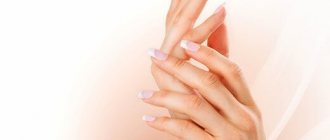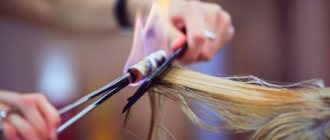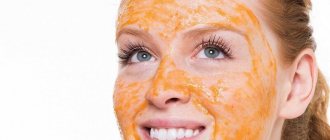04.04.2015 / Chemistry, biology and cosmetology
Author: Natalia Michalun, Varinia Michalun
Moreover, cosmetics contain many additional ingredients: emulsifiers, thickeners, gelling agents, stabilizers and preservatives. Each of them performs its own function, affecting the overall effect of the product. In this case, it is extremely important to determine the properties of all components and active elements in order to eliminate their incompatibility.
How often do we hear that this or that cosmetic product is rich in active ingredients that penetrate perfectly into the skin. But we don’t even think that the main task of such ingredients is not just to pass through the epidermis, but to act on a certain layer of it. This also applies to the surface of the skin, the so-called stratum corneum, into which not all substances need to penetrate. Therefore, to determine the effectiveness of a drug, it is necessary to take into account its entire composition, and not individual elements.
The essence of the active components is that they must get to a specific place, even if it is the surface of the stratum corneum. Therefore, it is necessary to pay tribute to the means that deliver them there, in other words, to the carriers, which include liposomes. For example, encapsulated retinol, penetrating the skin, irritates it less than its free counterpart. Moreover, cosmetics contain many additional ingredients: emulsifiers, thickeners, gelling agents, stabilizers and preservatives. Each of them performs its own function, affecting the overall effect of the product. In this case, it is extremely important to determine the properties of all components and active elements in order to eliminate their incompatibility.
There is no doubt that the ingredients in cosmetic products penetrate the skin. The problem is how to determine how deep they can or should go in order to have an effect on a certain area of the skin, and/or whether they remain cosmetics and not drugs. An equally important question is how to preserve the integrity of the active ingredients before they reach their destination. Cosmetic chemists have often faced the question: what percentage of such substances achieves their goal?
The use of tyrosine (melanin) inhibitors against hyperpigmentation is a prime example of how important the concept of penetration is in determining the effectiveness of a product. In particular, the active component must overcome the lipid barrier of the stratum corneum of the skin, the cellular structure of the epidermis, penetrate into melanocytes and only then into melanosomes. At the same time, the substance must retain its chemical qualities and integrity in order to cause the desired reaction, which will lead to the suppression of the conversion of tyrosine to melanin. And even this is not a very difficult task. Take sunscreens, for example, which, on the other hand, need to remain on the surface of the skin to do their job.
It follows from this that the effectiveness of a cosmetic product is the effect not only of its active components, but also of all other substances included in its composition. Moreover, each of the ingredients must help ensure that the active substances reach their destination without losing their effectiveness.
To determine the effectiveness of a product, you should answer the following questions:
— how do products penetrate? — How important is penetration for a cosmetic product? — Is it important for the penetration of the active components of a cosmetic product to treat specific skin types or conditions?
To give a full answer to them, you should take into account why, how and what parameters affect the penetration of cosmetic products.
What is product penetration?
Product penetration refers to the movement of substances or chemicals through the skin. The stratum corneum forms a barrier, due to which the skin is considered to be a semi-permeable membrane. This suggests that microorganisms cannot penetrate through the intact epidermis, unlike various chemical agents. The skin selectively provides a molecular passage. Despite this, a significant amount of chemicals when applied topically in the form of cosmetics or lotions are absorbed by the skin (in the range of 60%). Most agents that penetrate the skin must overcome the intercellular lipid matrix, because lipids form an almost continuous barrier in the stratum corneum. Its features depend on age, anatomy and even the season. With dry skin or during certain diseases, the stratum corneum becomes so thin that the active components penetrate much more easily and quickly.
For many consumers, a product's effectiveness is determined by the penetration capabilities of its ingredients. In reality, it directly depends on a number of factors, including the quantity and quality of the active ingredients in the cosmetics, the carrier substances that deliver the active ingredients to their target, the volume of the latter necessary for their optimal functioning and achievement of the desired result. The active component is considered effective when it reaches the desired location in a suitable concentration, while its effect on other areas is minimal.
For cosmetic products, it is equally important that their ingredients do not penetrate into the dermis, and from there into the blood through the capillary system. The entry of a product through the skin into the circulatory system transfers it from the category of cosmetics to medicines.
There are two types of ingredient delivery – dermal and transepidermal. In the first case, the substance acts in the stratum corneum, living epidermis or dermis. In the second - outside the dermis, often affecting the circulatory system. As a rule, cosmetic products are limited to dermal delivery, while transepidermal delivery is characteristic of medications. Thus, cosmetics should penetrate the skin, not through it. Therefore, one of the key points in the development of such drugs is to prevent transepidermal penetration of the components and their active effect in a certain layer of the skin.
At the moment, scientists are working on two main tasks. The first is to ensure that the active component reaches the desired location without losing its properties. The second involves creating a mechanism by which the same component will lose its influence if and when it leaves its area of influence.
At the same time, cosmetic chemists are often faced with the following issues:
– what volume of the substance remains on the skin? – how much of it arrives at a given location? – how much of the product can pass through the skin and reach the circulatory system? – what is the optimal ratio of the features of a cosmetic product?
We should also remember that determining the effectiveness of a product by its penetration capabilities may be erroneous. For example, skin lightening products must penetrate the epidermis, reaching the basal layer to inhibit the tyrosinase enzyme necessary for melanin production. At the same time, such drugs can only remain on the surface of the stratum corneum, and the lightening effect is achieved through the accumulation of pigment. In both cases, cosmetics are effective, but their penetration capabilities are different.
Take, for example, ultraviolet ray absorbers. They must remain on the surface of the skin to protect it. Once these substances penetrate the skin, they become less effective. At the same time, antioxidants and other chemical compounds with anti-aging properties need to reach the epidermis or even the dermis. Thus, the result of their action directly depends on whether they hit the target or not.
Moisturizers also work differently. Those that have occlusive qualities remain on the surface of the skin. Others need to penetrate its surface layers in order to retain moisture there. It follows that the need for penetration of cosmetics and its productivity is determined by the functions of its ingredients.
Anti-wrinkle creams: do they really help?
As we age, our skin loses its smoothness and elasticity, wrinkles appear on our face, and this is inevitable.
After 25 years, every woman begins to take more careful care of her skin in order to preserve its youth and freshness for as long as possible. To get rid of wrinkles and prevent their appearance, we spare no expense on various cosmetics that we regularly use. But do anti-wrinkle creams help us? What effect do they give? Can you really trust them?
Do anti-wrinkle creams help?
Let's first look at the undoubted advantages of creams that prevent skin aging.
- Hydration . Any skin needs an active water balance, and with age this problem becomes more pressing. Regular use of anti-wrinkle cream helps the epidermis retain water, preventing excessive dryness.
- Smoothing. As the skin ages, sagging and fine lines and wrinkles invariably appear. Anti-wrinkle cream not only smoothes them out, but also significantly improves the texture of the skin, its appearance, and promotes easy resurfacing of the face.
- Nutrition. With age-related skin aging, metabolism is disrupted, so the task of an anti-wrinkle cream is to nourish the skin well with the necessary microelements, minerals and vitamins, thereby slowing down the aging process.
- Protection. Over the years, the skin is increasingly exposed to external factors, and the purpose of an anti-wrinkle cream is to protect it from ultraviolet rays and help maintain a natural appearance. Especially if your skin is naturally light and sensitive.
- Recovery. Skin that fades with age needs to be restored and improved. This occurs due to microcirculation, which needs to be stimulated. This is where a product such as anti-wrinkle cream helps.
Anti-wrinkle creams that work
But, despite all the above benefits that answer the question of whether a cream helps against wrinkles, it is important not to forget that this is still a cosmetic product, not a medicine.
Read also: What to do about wrinkles around the eyes?
There are no miracles, and one cannot expect 100% rejuvenation. Here you can find the rating of anti-wrinkle creams.
Of course, there are excellent pharmaceutical preparations, for example, retinoic ointment, which effectively fights wrinkles, but still the task of all anti-wrinkle creams is to have a gentle effect on aging skin.
Therefore, you should remember that when purchasing such cosmetics, even very good and expensive ones, you should not expect too much from it.
Also, some women use pharmaceutical ointments for wrinkles such as hydrocortisone ointment, methyluracil ointment, relief ointment.
Principles of substance penetration
There are two main channels of penetration - extracellular and intercellular. When cosmetics are applied topically, the absorbing organ is the skin, which has many target points of action. Among them: sebaceous pores, sweat gland ducts, stratum corneum, living epidermis, dermoepidermal junction.
The penetration rate of active components depends on the size of the molecules, the carrier, and the general condition of the skin. The barrier function of the epidermis largely depends on whether the stratum corneum is damaged or not. Its removal or modification as a result of peeling, exfoliation, application of alpha hydroxy acids or a preparation containing retinol (vitamin A), dry skin, dermatological diseases (eczema or psoriasis) contribute to greater penetration of the cosmetic product.
In addition, the passage of the stratum corneum is influenced by the size of their molecules and the tendency to metabolic interaction with the biochemistry of the skin and cellular receptors. If the penetration rate is low, the concentration of the product will increase. This is facilitated by the fact that the stratum corneum acts as a reservoir. Thus, the tissues located underneath will be under the influence of the active substance for a certain time. Thanks to this, the stratum corneum is both a natural skin barrier and a kind of reservoir that allows you to prolong the effect of a cosmetic product after applying it to the skin. However, it is worth considering that various types of diseases can change the rate of local absorption. For example, diabetes mellitus changes the structure of the skin and affects its properties. Moreover, the skin on different parts of the body allows chemicals to pass through differently. In particular, the face and scalp absorb drugs 5 or even 10 times better.
Methods of penetration of active components
The stratum corneum, with its tightly interconnected cells, is a serious barrier to product penetration. Another barrier is the basement membrane or dermoepidermal junction. It is not surprising that the question arises, if one of the main functions of the skin is to protect the body from the introduction of foreign substances, then how do the ingredients of cosmetics manage to overcome this barrier. The answer is simple - the skin absorbs them with the help of sebaceous pores, sweat gland ducts, and intercellular channels. In addition, most cosmetics intended for topical application do not penetrate the epidermal layer due to one or more of the reasons given below:
• molecular size (too large); • retention or binding of the substance to the surface of the skin through other ingredients included in the product; • evaporation (if the substance is volatile); • adhesion (adhesion) to the cells of the stratum corneum, which disappears during the process of peeling or exfoliation.
How do the components of cosmetics penetrate:
• through epidermal cells or cellular cement; • through the formation of a reservoir, when the substance accumulates in the stratum corneum (or subcutaneous fatty tissue), and then is slowly released and absorbed into the tissue; • in the process of natural metabolism in the skin; • pass into the dermis and remain there; • pass into the dermis, are absorbed into the circulatory system by capillaries (this resembles the effect of drugs, striking examples are the introduction of nicotine and estrogen).
Of course, understanding why and how active substances penetrate is important, but one must also consider the conditions that may influence these processes.
Skin structure – does the cream penetrate the skin?
Try to imagine our skin in the form of a volleyball net, and the molecules of a cosmetic product in the form of a volleyball.
Do you think the cream, as the advertisement claims, will be able to penetrate through the fine mesh and produce the promised miraculous effect? What modern methods and technologies are capable of delivering a complex of wonderful components to the deep layers of the skin, bypassing the epidermal barrier? Is it worth spending money on expensive luxury cosmetics or are all the promises nothing more than a fraudulent ploy? And how deep can a regular cream penetrate the skin?
To understand whether cosmetic products and their ingredients work, you need to remember the basics. Namely, how the skin is structured, what layers it consists of, what are the characteristics of its cells.
How is our skin structured?
Skin is the largest organ of the human body. Consists of three layers:
- Epidermis (0.1-2.0 mm).
- Dermis (0.5-5.0 mm).
- Hypodermis or subcutaneous fat (2.0-100 mm or more).
The first layer of skin is the epidermis, which is what we usually call skin. This layer is the most interesting for cosmetologists. This is where the components of creams work. Only drugs that are administered by injection penetrate further.
Epidermis and epidermal barrier: an obstacle to beneficial substances or a reliable ally?
The epidermis, in turn, consists of 5 layers - basal, spinous, granular, horny. The stratum corneum is lined with 15-20 rows of corneocytes - dead horn cells, in which there is no more than 10% water, there is no nucleus, and the entire volume is filled with a strong protein, keratin.
Corneocytes tightly, like true friends, hold on to each other with the help of protein bridges, and the lipid layer holds these cells together stronger than cement - bricks in a masonry.
Corneocytes form the epidermal barrier, which, like a turtle shell, protects the skin from external influences - both beneficial and harmful. However, there is a loophole! To penetrate inside, to the living cells of the epidermis and dermis, cosmetic substances must move along the fat layer! Which, let us remember, consists of fats and is permeable only to fats and substances soluble in these fats.
The barrier of the stratum corneum is impermeable (more precisely, weakly permeable) to water and water-soluble substances. Water cannot penetrate from the outside, but it is also unable to come out. This is how our skin prevents dehydration.
That's not all!
In addition to the fact that the substances must be soluble in fat, their molecules must be small. Corneocyte cells are located at a distance measured in millionths of a millimeter. Only a tiny molecule can get between them.
It turns out that a good, working cosmetic product is one in which the beneficial components are a) fat-soluble; b) can overcome (but not destroy!) the epidermal barrier
It would be great if fat-soluble substances and micromolecules were packaged in tubes and jars!
First, let's clarify where collagen and elastin are produced and why the skin needs them.
In the lower layer of the epidermis - the basal layer, bordering the dermis - new epidermal cells are born. They go upward, gradually aging along the way, becoming tougher. When they reach the surface, the bonds between them will weaken, and the old cells will begin to slough off. This is how our skin is renewed.
If cell division slows down or they do not exfoliate in time (this is called hyperkeratosis), the skin will become dull and lose its beauty. In the first case, retinoids, derivatives of vitamin A, will help (they will speed up the regeneration mechanism). In the second - exfoliating preparations (peelings).
Let's return to elastin and collagen and find out why they are useful
We're told that collagen and elastin help skin stay firm and youthful, without wrinkles. What is meant?
Collagen and elastin are the two main proteins of the dermis, consisting of amino acids and twisted into threads. Collagen fibers are shaped like spirals (springs) and form a kind of frame that makes the skin strong. And thin elastin fibers help it stretch and return to its original state.
The better the collagen and elastin fibers, the more elastic the skin.
Collagen fibers are necessary for normal regeneration, because... help new cells rise faster from the basal to the surface layers of the skin. Another function of collagen is to absorb and retain moisture in cells. One collagen molecule can hold water in a volume 30 times greater than the size of the molecule itself!
If the collagen springs weaken and cannot retain moisture, the skin will sag or stretch due to gravity. Jowls, nasolabial folds, wrinkles and dryness are external manifestations of negative internal changes.
In addition to collagen and elastin fibers, the dermis contains fibroblast cells and glycosaminoglycan substances. What are they doing?
The glycosaminoglycan familiar to us all is hyaluronic acid, which fills the intercellular spaces and forms a network in which moisture is retained - a gel is obtained. Springs of collagen and elastin seem to float in a pool filled with gel-like hyaluronic acid.
So, collagen and elastin fibers form a strong elastic frame, and the aqueous gel of hyaluronic acid is responsible for the fullness of the skin.
What do fibroblasts do?
Fibroblasts belong to the main cells of the dermis and are contained in the intercellular substance, between collagen and elastin fibers. It is these cells that produce collagen, elastin and hyaluronic acid, destroying and synthesizing them again and again.
The older a person is, the more passive fibroblasts behave - and, accordingly, the slower collagen and elastin molecules are renewed. More precisely, only the synthesis of new molecules slows down, but the processes of destruction proceed at the same pace. A warehouse of damaged fibers appears in the dermis; the skin loses its elasticity and becomes drier.
Fibroblasts are a collagen and elastin factory. When the “factory” does not work well, the skin begins to age.
Is it possible to speed up the synthesis or compensate for the lack of collagen and elastin proteins?
This is a problem that cosmetologists have been trying to solve for many years! Now they use several methods:
- The most expensive and at the same time the most effective solution is injection procedures. The salon will offer you mesotherapy - the injection of cocktails with hyaluronic acid and collagen under the skin.
- Good results are obtained by RF lifting (Thermolifting) - a hot measure based on heating the skin with radio frequency radiation (Radio Frequency) to a depth of 2-4 mm. Warming stimulates the activity of fibroblasts, the collagen framework becomes stronger, the skin is smoothed and rejuvenated.
- A simpler and cheaper method is the use of creams with collagen, elastin and hyaluronic acid.
Is there a contradiction here?
How and what active substances that can cause regenerative processes in the skin will penetrate into the deeper layers?
As you remember, in the way of any cosmetics containing collagen, elastin or hyaluronic acid, there is an epidermal barrier. You also remember that fat-soluble substances and, in small quantities, water-soluble substances can bypass the barrier, but only with the smallest molecule.
Let's start with the tasty stuff - collagen and elastin
Collagen and elastin are proteins; they do not dissolve in either water or fat. Moreover, their molecules are so large that they cannot squeeze between the keratin scales! Conclusion - cosmetic collagen (and elastin too) do not penetrate absolutely anywhere; they remain on the surface of the skin, forming a breathable film.
Advanced cosmetics users have probably heard about hydrolyzed collagen and hydrolyzed elastin. This form is easily identified by the word hydrolyzed in the composition of the cosmetic product. To obtain collagen hydrolyzate, enzymes are used, and for elastin hydrolyzate, alkalis are used. Plus additional factors - high temperature and pressure.
Under such conditions, a strong protein breaks down into its components - amino acids and peptides, which - and this is true! – seep into the skin. However, not everything is so smooth with individual amino acids, because they:
- are not a complete protein;
- do not have the properties of the original substance;
- are not able to force fibroblasts to synthesize their own collagen (or elastin).
Thus, even if they squeeze inside the skin, “non-native” proteins will not behave like their own, “native” ones. That is, they are simply useless in the fight against skin aging and wrinkles. What a cream with collagen is definitely useful for is its ability to restore the damaged epidermal barrier and smooth out surface wrinkles.
All other promises are a scam, a marketing ploy worth half a salary.
Why do you need hyaluronic acid in creams?
Hyaluronic acid is water soluble, so it works well with other ingredients in cosmetics. There are two types - high- and low-molecular.
High molecular weight hyaluronic acid is complex in composition, with a huge molecule. Animal-derived hyaluronic acid is added to cosmetics. The size of the molecule allows it to attract moisture in large quantities (super-humidifier!), but prevents it from penetrating into the skin on its own.
Injections are used to deliver high molecular weight acid. These are the same fillers that cosmetologists use to fill wrinkles.
Low molecular weight acid – modified. Its molecules are small, so it does not lie on the surface of the epidermis, but falls further and works in depth.
To modify the “hyaluronic acid”:
- break its molecules into fractions by hydrolysis;
- synthesized in laboratories.
Creams, serums, and masks are enriched with this product.
Another product is sodium hyaluronate. To obtain it, the molecules of the starting substance are purified, removing fats, proteins and some acids. The output is a substance with a tiny molecule.
Low molecular weight hyaluronic acid can independently get where it needs to go. High molecular weight must be used externally or administered by injection.
Cunning manufacturers try not to use incredibly expensive low-molecular "hyaluronic acid". And they are greedy with high molecular weight, sometimes adding 0.01% - just enough to be able to mention the substance on the label.
Factors Affecting Product Penetration
The main condition affecting the speed and quality of absorption of the substance by the skin is the healthy state of the stratum corneum. In second place is skin hydration. Not surprisingly, the most common method of improving cosmetic penetration is occlusion (trapping liquid in the stratum corneum), which prevents moisture from evaporating from the surface of the skin, which only contributes to its hydration. Face masks work on this principle. An environment with a relative humidity of 80% also leads to significant hydration of the epidermis. It should be noted that the skin absorbs water well, but cannot always retain it in the required amount. As a result of excessive moisture, the stratum corneum becomes softer (as, for example, during prolonged bathing), its barrier function weakens, which leads to dehydration and increases moisture loss.
One of the main ways chemicals penetrate the stratum corneum is through lipid-containing intercellular spaces. Therefore, the lipid composition of this layer of skin also affects the penetration of active components. Given the oil-to-oil miscibility, chemical ingredients with oil-based carriers will penetrate better than their water-based counterparts. However, lipophilic (oil-based) chemicals have a more difficult time penetrating continuously due to the fact that the lower layers of the epidermis have a higher water content than the stratum corneum and are therefore considered lipophobic. As you know, oil and water practically do not mix. Therefore, the carriers into which product ingredients are combined for easier application and concentration control also play an important role in determining penetration rates.
In some cases, chemical absorption is limited not by the barrier function of the skin, but by the properties of the carrier itself. For example, products that require active ingredients to remain on the surface of the epidermis (sunscreens and moisturizers) are more effective if they are oil-based. On the other hand, the passage of hydrophilic (water-based) active substances into the intercellular space containing lipids requires either a series of cosmetic manipulations aimed at moisturizing the stratum corneum, or the use of liposomes as carriers.
The main difficulties associated with the penetration of active substances are the speed at which the ingredients move and the depth they reach. Several methods have been developed to control these parameters. They involve the use of special carriers (liposomes), natural encapsulating materials, and other systems. In any case, no matter what technique the manufacturer chooses, his main task is to ensure the penetration of active substances to the required area with the maximum possible effect and without adverse reactions in the form of irritation or skin absorption.
Product testing
There are a variety of test methods to determine the effect of the active ingredient in the skin and its location after topical application. Such tests are carried out both in laboratory and in natural conditions, often using complex computer programs. For laboratory tests, the skin is cultured in glass tubes where the cells multiply about 20 times or more. Often, skin samples are used from patients who have undergone plastic or any other surgery, during which a piece of the epidermis was removed. Such tests have great advantages in terms of time, cost and ethical considerations - especially if they may be toxic.
In natural conditions, cosmetics are tested on animals and humans. Test results are distinguished by more specific data that are as close to reality as possible, which is especially valuable when the systemic effect of the product is in doubt, in other words, how the drug can affect the body as a whole. The techniques used depend on what the scientists are trying to prove. For example, to establish the level of moisturizing and restorative properties of a product for dry skin, experts recruit volunteers who will have to use regular soap-containing preparations on their skin for several days without additional moisturizing. After this, the dryness of the epidermis is tested. The researchers then give moisturizing products to one group of subjects and a placebo to another. At certain intervals, the level of skin hydration among all groups is checked to determine the rate at which it is saturated with moisture.
When testing sunscreen preparations, the main task of the tests is to preserve the active substances on the surface of the stratum corneum, ensuring their maximum effectiveness and preventing toxic side effects. In this case, scraping with adhesive tape, blood and urine tests are used. As a result of such tests, some substances were detected in blood plasma and urine. The exception was mineral-based sunscreens.
When testing products that need to remain on the surface of the skin or in the stratum corneum, scientists first apply the drug and then take skin samples using tape or a prick test. The rate of product penetration and cellular changes at different penetration levels is then studied using computer models. The systemic effect of products is studied using the same principle. Computer programs make it possible not only to understand how deeply the product penetrates, but also what changes in the cellular structure it can cause. Particular attention is paid to the consequences of penetration of the product into the skin; blood, urine and other biological fluids are examined. Some substances may be present in the body in such low concentrations that they can only be detected with very sensitive equipment.
Given the functions of the skin, products (in particular, the specific components that make up them) under appropriate conditions penetrate through absorption. But product penetration does not always determine its effectiveness. In some cases it may be undesirable or even harmful.
Advances in cosmetic chemistry have made it possible to better understand the functions of the skin, and with the help of modern technologies, maximum efficiency in the penetration of active substances can be guaranteed with minimal side effects.
Tags: chemistry and biology
Market Analytics
- Black Lives Matter movement: reaction and consequences for the beauty industry
- COVID-19 is changing the rules of the game in the cosmetics market
- Beauty of the future: cosmetic innovations 2020
Convenient search for beauty salons on our website
Beauty salons in Moscow Beauty salons in St. Petersburg Beauty salons in Ekaterinburg Beauty salons in Novosibirsk
Latest blog posts on our website
- Naturecream / MATRIXYL3000 - the best skin elasticity stimulator
- Naturecream / SPF in Natural Oils
- Naturecream / Geranium (Pelargonium) oil for skin health and beauty
- Prostye-sovety / Save on a beauty salon: procedures that can be done at home
- Naturecream / Growth Factor - brings back youth?
- Oksana-Lezina / 3 effective abdominal exercises from a fitness instructor for beginners
- Prostye-sovety / Making perfect curls at home
- Prostye-sovety / Which hair removal method to choose
- Naturecream / Wrinkles Puppets
- Naturecream / PEPHA-TIGHT - instant skin lifting
Latest forum topics on our website
- Mrs._Smith / Badly sunburned! What to do?((
- Ice / Is it necessary to combine fitness classes with a diet?
- Antonova / What can be used for hair loss?
- Radio operatorKat / Who was on a protein diet?
- Suzanna / Mesotherapy on the face
Other articles in this section
| Dry shampoo for hair Hair that has lost its freshness and lacks volume can ruin your mood in the morning. How often do women have to sacrifice a neat hairstyle in order not to be late for work or a date. For a well-groomed and stylish lady, this is truly a huge sacrifice. However, don’t despair; to avoid such problems in the future, just stock up on dry shampoo. |
| Collagen in cosmetology Collagen receives much attention in cosmetology, primarily because it is responsible for the appearance of wrinkles, reducing the elasticity and smoothness of the skin. Let's take a closer look at what collagen is in our body, how we can stimulate the production of our own collagen, how cosmetics containing it help the skin, and what types of collagen exist. |
| A patent has been issued for a photoprotective composition for use in dermatology and cosmetology. Details of a patent for a photoprotective composition for use in dermatology and cosmetology, which Beiersdorf AG received, have become known. |
| 1,4-dioxane (diethylene dioxide) Very little information is available on the presence of 1,4-dioxane in cosmetics and personal care products, although an analysis by the Campaign for Safe Cosmetics (co-founder of the Environmental Working Group) suggests that this substance may be found in 22% of the more than 25,000 products listed in the Skin Deep database. This is because 1,4-dioxane is often an impurity (contaminant) or by-product in the production of the main components of cosmetics, and therefore it is not listed as an ingredient on the product label. |
| The role of alcohol in cosmetics Alcohol in various forms is used in skin care products and cosmetic formulations for various purposes. The presence of alcohol in a recipe has always been the source of discussions related to the beneficial or unfavorable properties attributed to it. |
| Formaldehyde and formaldehyde-releasing preservatives Formaldehyde and formaldehyde-releasing preservatives are used in many personal care products, particularly shampoos and liquid hand and body soaps. These substances help prevent bacteria from growing in water-based products, but they can also penetrate the skin and lead to skin sensitization and cancer. |
| Vitamin D and Skin Health Vitamin D is a fat-soluble vitamin that is essential for maintaining normal calcium metabolism. The main source of vitamin D for most people is exposure to sunlight. |
| Vitamin A: Importance for the Skin and Whole Body This article is one of the most comprehensive reviews of vitamin A published. Don't rush and try to understand everything at once, use the links for further reading and self-education. Consult a cosmetology dictionary to clarify words you don't know or don't understand. Apply knowledge of the structure and function of cells and skin support systems to develop a holistic understanding of the material. |
| How to correctly read labels on cosmetics To avoid unpleasant consequences, you need to learn how to “read the composition” of a cosmetic product. This will not only allow you to insure yourself against health-hazardous purchases, but also eliminate expensive and unnecessary purchases. |
| Lead and Other Heavy Metals A number of metals, including lead, arsenic, mercury, aluminum, zinc, chromium and iron, are found ubiquitously in cosmetics, ranging from lipstick, whitening toothpaste, eyeliner, nail polish and more. |
What is better - ointment, cream or gel?
Gel or cream – which is better to buy? This question is asked by buyers of medicines, cosmetics and even shaving products. And if the drug or cosmetic substance is also available in the form of a balm and ointment, the choice becomes even less obvious. Let's figure it out.
Figure 1 - Which is better - ointment, cream or gel? The answer is not always obvious.
How does a cream differ from an ointment, and an ointment from a gel?
The difference between cream, gel, balm and ointment is as follows:
- Cream is a dosage form based on oil and water. Creamy substances are easily absorbed, but are not able to penetrate deep into the tissue. They can be applied to surfaces that are constantly wet. In most cases, they are completely absorbed and do not stain clothes. You can rub the cream in and go about your business.
- The gel does not contain fats and oils, its acid-base indicators are close to those of the skin. It spreads easily over the skin, is quickly absorbed, and does not clog pores. Sometimes, after it dries, an airtight film remains (for example, Diclofenac). The structure of gel-like preparations can be liquid (for example, Troxevasin) or viscous. When stored in the refrigerator, they partially thicken, but when heated to room temperature, they restore their properties. Like creams, gels are convenient to use during the day.
- Ointment is a dosage form based on fats. It is absorbed more slowly than gel-like and creamy preparations, but it lasts longer. Penetrates deeply. It is applied to dry surfaces, scars, seals. Lubricated areas can be covered with bandages. The remaining fatty base usually has to be removed manually, so you need to apply ointment-like substances under clothing carefully. Some of them have a specific smell (for example, Vishnevsky ointment). The thickest ointments are called pastes. They contain up to 20% powdery substances. Most often they have drying properties.
- Balm is a medicinal or cosmetic product that contains no water at all. When you need to clarify what the difference is between a balm and a cream, this difference is given first. The absence of water allows balms to retain their properties for a long time. This is due to the fact that harmful bacteria multiply in water, and there is no natural habitat for them here.
Figure 2 – Which is better – gel or cream, depends on the patient’s age and the condition of his skin.
The main difference between cream and ointment is the percentage of fat content. Something in between these substances in texture is called liniment. This dosage form contains fats and oils.
If there is more fat, then the liniment resembles an ointment, if there is oil, it resembles a cream (for example, Synthomycin liniment).
At body temperature, liniments begin to melt, so they are applied a little at a time so that excess medicine does not drip onto clothes and the floor.
Is it possible to replace cream-type medications with ointment-type ones and vice versa?
What is better, ointment or cream, is decided by the doctor in each specific case. When it is not possible to obtain the required dosage form, the ointment can be replaced with cream.
Replacement is possible in cases where the dosage of the active substance in the creamy medicine is the same or less than in the ointment.
If the dosage is less, the cream will need to be applied more often (the number of additional procedures must be calculated in advance).
You cannot use ointment instead of cream. It is absorbed much deeper, so it can affect the “wrong” areas (for example, with a strong inflammatory process).
Figure 3 - When replacing ointment with cream, pay attention to the concentration of the active substance.
Do not use different dosage forms at the same time. When mixed, their components may not provide the same effect as desired.
If your treatment plan includes different medications and you are deciding whether to apply an ointment or a gel first, start with the gel-like substance.
When it is completely absorbed and its expiration date has passed (usually 2-4 hours), clean the treated surface from the film as much as possible, then lubricate it with ointment. This is also true for creams that should be used before ointments.
Gel and ointment - difference in shelf life
Expiration dates are usually given for sealed medications. As a rule, manufacturers write how long a substance can be stored unopened. In general, ointment-based preparations last longer than gel-based preparations because the fats they contain prevent drying out.
Figure 4 - Store medications as recommended by the manufacturer.
When storing ointment, pay attention to the manufacturer's recommendations. In the refrigerator, the medicine can harden, and at a crucial moment you simply cannot get it out of the tube.
Gel-like preparations are more convenient to use than ointment-like preparations with a similar effect, and therefore cost a little more.
Gel or ointment – which is better in emergency situations?
The gel is absorbed much faster than ointment. Therefore, in a situation where you urgently need to relieve pain, for example, a joint, it acts faster. If you need to provide a longer analgesic effect, relieve inflammation, ointment is preferable.
In addition to the duration of action, the list of ways in which an ointment differs from a gel includes the ability to adhere to the surfaces being treated. Gel-like medications adhere better to wet, wet surfaces, from which ointment-like medications simply slide off.
In general, ointment can penetrate deeper than gel. However, some gel preparations (for example, Traumeel) contain additives that ensure deep penetration of the main active ingredient. Then the difference between gel, cream and ointment is insignificant.
Figure 5 - Gels and creams act faster, ointments last longer.
Gel or cream – which is better to use for cosmetic purposes?
Cosmetics for hands, face and body are also made in the form of gels and creams.
- Cosmetic gel consists of 75−85% water. The remaining 15−25% are microparticles with the ability to retain moisture and other special properties. The high water content allows gel-like products to be easily absorbed into the skin, perfectly moisturize it, and avoid the formation of an unpleasant greasy film. They are recommended for young, combination, oily and problematic skin.
- Creams contain much less water than gel products. But they contain a lot of oils that provide different effects: nutrition, whitening, smoothing out fine wrinkles, etc. Creamy products are suitable for mature, dry and combination skin. They often leave an oily sheen and may not be completely absorbed. It is dangerous to apply them to problem skin - fats can clog pores and provoke even greater inflammation.
Figure 6 – Problem skin loves gel, while normal skin loves cream.
The main difference between gel and ointment and cream is the time of use: gel-like substances are best used in the morning and afternoon, and cream-like substances are best used before bed. There are day creams, which are similar in structure to a gel, and night creams, which are more like an ointment.
How does the effect of cream and ointment differ in inflammatory processes?
What is the difference between the effects of ointment and cream for a specific disease is usually explained by doctors when prescribing medications. If this does not happen, and the pharmacist asks something like: “Which Triderm do you want - ointment or cream?”, take into account the following information.
- The cream is effective at the beginning of the disease, when the inflammation is acute. This dosage form is also used in cases of swelling, weeping blisters, and itching. Creamy preparations are well absorbed into oily skin. They are also recommended for children.
- The ointment treats inflammation that does not go away for a long time or has already become chronic. Its components work well on dry, flaky skin. Ointment-like dosage forms are optimal when the active substance must penetrate into the deep layers of tissue.
So, knowing the difference between a cream and an ointment, gel, or balm, you can choose the drug in the optimal dosage form. This will speed up recovery, help reduce pain, avoid side effects and save money. Get well soon!
1 – Pharmacological notes
2 – Can you be allergic to allergy ointment?
Source: https://uteka.ru/articles/zhenskoe-zdorove/chto-lychshe-maz-ili-krem-ili-gel/











